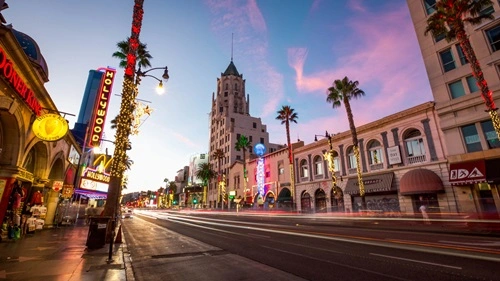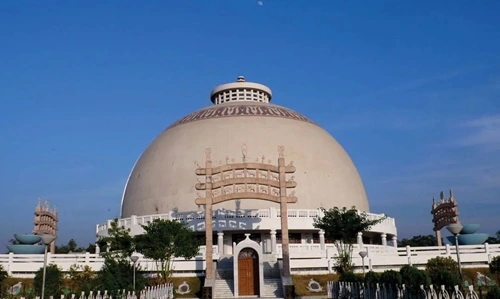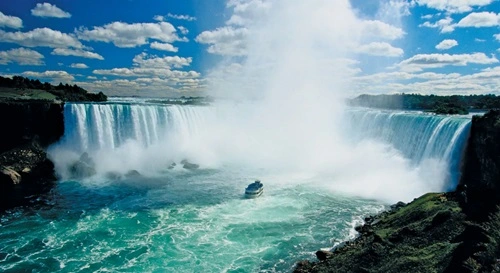California, the Golden State, is famous for its diverse landscapes, innovative industries, and iconic cities. Stretching along the western coast of the United States, California is a land of contrasts, from sandy beaches and towering redwoods to sprawling vineyards and cutting-edge tech hubs. Whether you’re drawn to its cultural landmarks, natural beauty, or vibrant communities, California never fails to amaze. Here are more than ten fascinating facts about California that reveal why it’s one of the most unique places in the world.

1. California Has the Largest Economy of Any U.S. State
If California were its own country, it would boast one of the largest economies in the world. With a GDP of over $3 trillion, California’s economy ranks alongside major nations like Germany and Japan. The state’s economy is fueled by diverse industries, including technology, agriculture, entertainment, tourism, and aerospace. Silicon Valley alone, home to giants like Apple, Google, and Facebook, plays a massive role in California’s economic power, positioning the state as a global leader in innovation and industry.
2. The Birthplace of Hollywood and the Entertainment Industry
California is the undisputed heart of the entertainment industry. Hollywood, a district of Los Angeles, became the center of film production in the early 20th century, drawing filmmakers with its sunshine, mild climate, and varied landscapes. Today, Hollywood is synonymous with the film industry, producing blockbuster movies and shows that reach audiences worldwide. Visitors can tour iconic studios, see the Hollywood Walk of Fame, and even catch a glimpse of their favorite stars.
3. The Tallest Trees in the World
California’s Redwood National and State Parks are home to the tallest trees on Earth, the coast redwoods, which can grow up to 380 feet. These ancient giants are found along California’s northern coast, where the cool, foggy climate allows them to thrive. The state is also home to the General Sherman Tree, a giant sequoia in Sequoia National Park, considered the largest living tree by volume. Walking through California’s redwood forests feels like stepping into another world, with trees towering above you that have been growing for over a thousand years.
4. California Leads in Renewable Energy Production
California is at the forefront of the renewable energy movement in the United States. The state has committed to using 100% clean energy by 2045, and it already produces a significant portion of its power from renewable sources like solar, wind, and geothermal energy. The Mojave Desert is home to one of the largest solar power plants in the world, while California’s coastal regions support extensive wind farms. The state’s commitment to sustainability has made it a model for other states and countries looking to reduce their carbon footprint.
5. California Is the Most Populous State in the U.S.
With over 39 million residents, California is the most populous state in the U.S., accounting for nearly 12% of the country’s population. The state’s population is incredibly diverse, with people from around the world calling it home. California’s largest cities, Los Angeles, San Francisco, and San Diego, are cultural melting pots where diverse cuisines, languages, and traditions thrive. The state’s diversity contributes to its vibrant arts, music, and culinary scenes, making California a fascinating place to live and visit.
6. Home to the World’s Tech Capital: Silicon Valley
Silicon Valley, located in the San Francisco Bay Area, is the world’s leading tech hub and the birthplace of many groundbreaking technologies. The region is home to global tech companies, startups, and venture capitalists who are constantly pushing the boundaries of innovation. Silicon Valley’s influence spans the globe, impacting everything from communication and transportation to healthcare and entertainment. Companies like Apple, Google, Tesla, and Facebook all began here, shaping how billions of people interact with technology today.
7. The San Andreas Fault: California’s Earthquake Zone
California’s geography is marked by the San Andreas Fault, a major fault line that runs roughly 800 miles through the state. This fault is responsible for the state’s frequent earthquakes, including the 1906 San Francisco earthquake, one of the most significant seismic events in U.S. history. While the potential for earthquakes has led to increased building codes and preparedness measures, Californians are known for their resilience and adaptability, facing these natural events with preparedness and community support.
8. Napa Valley: A Wine Lover’s Paradise
California’s Napa Valley is one of the premier wine-growing regions in the world, known for its high-quality Cabernet Sauvignon and Chardonnay. The valley’s Mediterranean-like climate is ideal for vineyards, and Napa’s wine industry attracts millions of tourists annually. Wine enthusiasts flock to the area for tastings, vineyard tours, and wine festivals, making Napa Valley a key part of California’s agricultural economy. With over 400 wineries, Napa Valley is a must-visit for wine lovers and anyone interested in California’s rich viticultural heritage.
9. California Has the Only Active Volcanoes in the Continental U.S.
Most people don’t associate California with volcanoes, but the state is home to several active ones, including Mount Shasta, Lassen Peak, and the Long Valley Caldera. Lassen Peak last erupted in 1915, while Mount Shasta is considered dormant but remains active. California’s volcanic history has shaped much of its landscape, particularly in the northern and eastern parts of the state, where geothermal activity creates natural hot springs and unique geological formations.
10. Disneyland: The Happiest Place on Earth
California is home to the original Disneyland Resort in Anaheim, which opened in 1955. The brainchild of Walt Disney, Disneyland was the world’s first theme park of its kind and has since grown into a global cultural icon. Today, the Disneyland Resort includes Disneyland Park and Disney California Adventure, drawing millions of visitors each year. Known as “The Happiest Place on Earth,” Disneyland has delighted generations of families with its immersive rides, shows, and beloved Disney characters.
11. Death Valley: The Hottest Place on Earth
Death Valley, located in eastern California, is the hottest place on Earth, where temperatures can soar to over 130°F in the summer. In fact, it holds the record for the highest air temperature ever recorded, a scorching 134°F in 1913. Despite its extreme heat, Death Valley attracts adventurous visitors who are intrigued by its unique landscapes, including salt flats, sand dunes, and vibrant wildflower blooms in the spring. The park’s harsh yet beautiful environment makes it one of California’s most dramatic natural wonders.
12. California’s Gold Rush Shaped the American West
The 1848 California Gold Rush drew people from all over the world to the state in search of fortune. This rapid influx of settlers spurred California’s growth and contributed to its admission as the 31st state in 1850. The Gold Rush left an indelible mark on California’s identity, with remnants of old mining towns and gold-rush heritage sites preserved throughout the state. Today, visitors can pan for gold, explore historic towns, and experience a piece of this transformative era in American history.
13. San Francisco’s Iconic Golden Gate Bridge
The Golden Gate Bridge, completed in 1937, is one of the most recognized landmarks in the world. Spanning the Golden Gate Strait, this iconic suspension bridge connects San Francisco with Marin County and is admired for its Art Deco design and striking International Orange color. The Golden Gate Bridge draws millions of tourists annually, who come to walk or bike across it and capture its breathtaking views of the San Francisco Bay and the Pacific Ocean.
14. The Largest Agricultural Producer in the U.S.
California leads the U.S. in agricultural production, growing over 400 different crops and producing more than a third of the country’s vegetables and two-thirds of its fruits and nuts. From almonds and avocados to strawberries and citrus, California’s Central Valley is one of the most productive agricultural regions in the world. California’s agriculture industry plays a vital role in both the state’s economy and the nation’s food supply.
Conclusion
California is a state of endless diversity, where towering trees, cutting-edge tech, scenic vineyards, and vibrant cities come together to create a land of opportunity and beauty. From its influential economy and iconic landmarks to its unique natural features and cultural landmarks, California remains one of the most captivating places to explore. Each of these interesting facts showcases the Golden State’s vast contributions to innovation, entertainment, and environmental stewardship, proving that California truly offers something for everyone. Whether you’re visiting for its beaches, exploring its national parks, or sampling wine in Napa Valley, California is a state that never fails to inspire and amaze.



